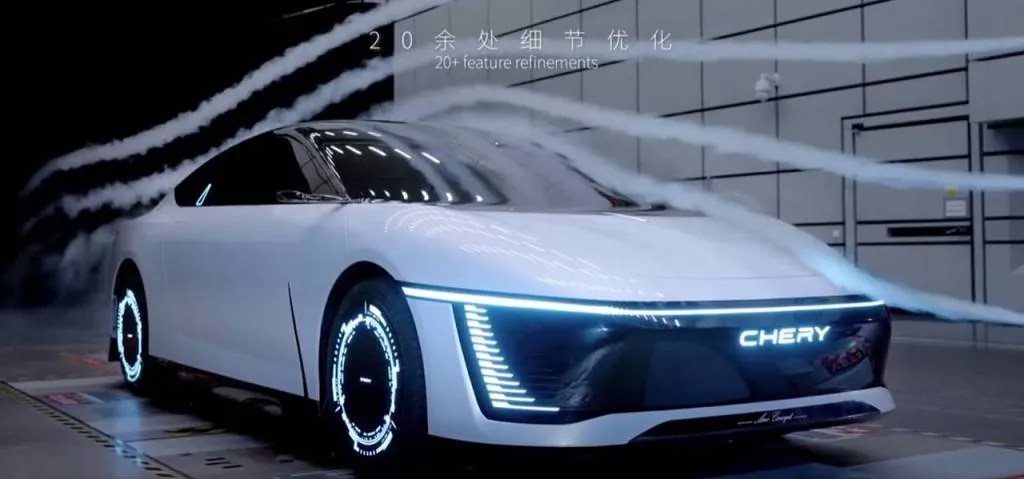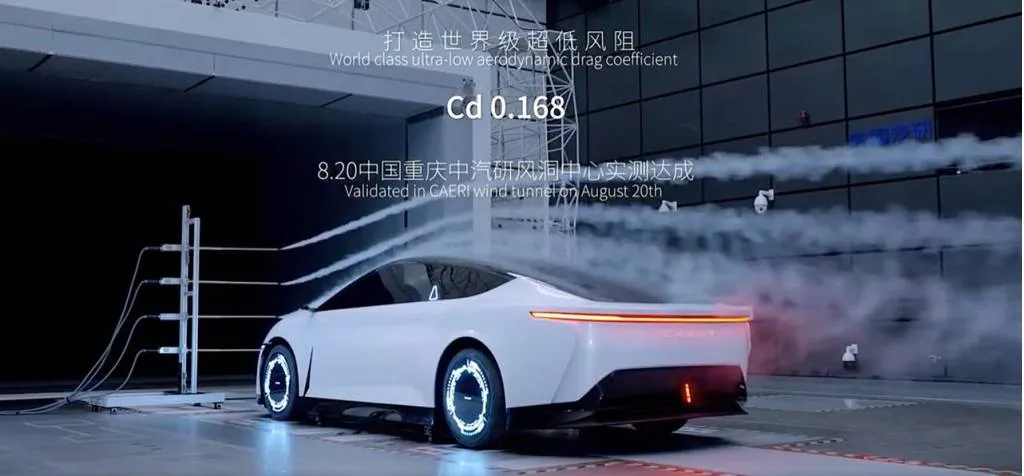Chinese automaker Chery has designed an EV concept inspired by tuna fish. And it claims this car is the most aerodynamic in the world.
First spotted by Electrek, the concept is claimed to have a coefficient of drag (Cd) of just 0.168, measured during wind-tunnel testing conducted in August. That was reportedly achieved with “AI simulation techniques” that tested over 2,000 different configurations inspired by the tuna, one of the most hydrodynamic and fastest-swimming fish.
Because air acts like a fluid at higher speeds, a design inspired by a sea creature could indeed be relevant for land-based vehicles. However, because these aerodynamic properties only come into play at higher speeds, aero is less relevant for urban vehicles traveling at lower speeds. It can make a huge difference in highway range, however.

Chery EV concept claiming 0.168 Cd (Weibo screencap)
Chery revealed its first electric car back in 2009. It was once likely to launch in the U.S. and Europe, but after some changes in strategy it looks poised to arrive in Europe within a couple years.
It’s unclear whether the Chery concept will reach production, and whether it will be able to maintain its low Cd if it does. The Lightyear 0 was claimed to be the most aerodynamic production car in the world, with a 0.175 Cd, but it sure wasn’t produced for long. Production started in December 2022, but the following month Lightyear announced that the solar-assisted EV was being nixed as it pivoted to a more affordable model.
The Volkswagen XL1 achieved 0.189 as a production model, but it wasn’t offered in America. The GM EV1 might still hold that title for the U.S. market with a 0.19 Cd.

Chery EV concept claiming 0.168 Cd (Weibo screencap)
Lucid claimed to have the most aerodynamic luxury car with its Air sedan at 0.21, but it’s very close to the rival Mercedes-Benz EQS and Tesla Model S. China’s Nio, meanwhile, has claimed the title of most aerodynamic SUV with its EC7.
Mercedes-Benz also claimed just a 0.17 coefficient of drag with its EQXX concept—along with several clever engineering solutions to escape the EV weight spiral—but the challenges of production are something else.







